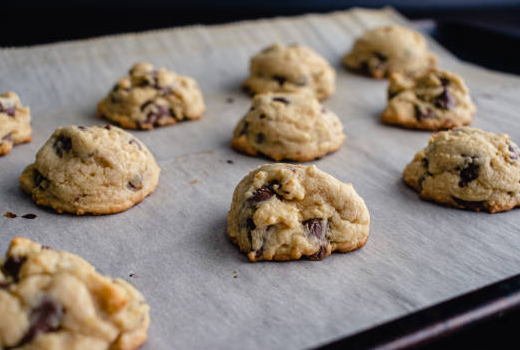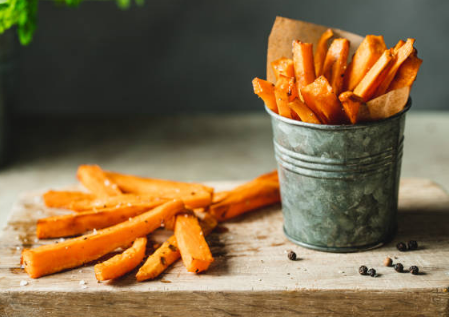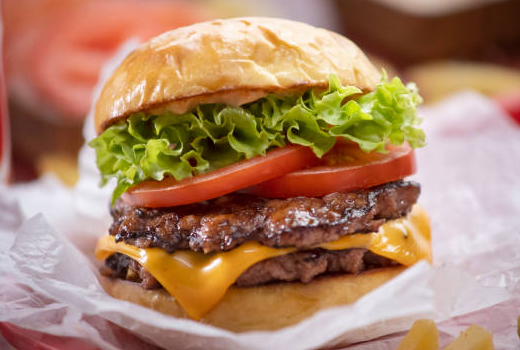How to Prevent Cookies from Sticking to the Baking Sheet

How Long Do You Grill Chicken?
May 6, 2025
Newton’s Fig Fruit Chewy Cookies: The Perfect Blend of Taste and Nutrition
May 14, 2025A batch of warm, freshly baked homemade cookies or bars is the perfect treat to share with family and friends. But it’s no fun if you spend time and money making sugar cookies or layered bars, only for them to turn into a sticky mess and get stuck to your baking sheet or pan.
How to Keep Cookies from Sticking to the Pan
Thanks to years of experience in the cookie-making world at the Better Homes & Gardens Test Kitchen, we’ve gathered some simple tips and tricks on how to prevent cookies (or other baked goods) from sticking. We’ll help you figure out whether to use a greased or ungreased pan for your cookies and share how to let them cool long enough to avoid crumbling.

1. Follow the Recipe Exactly
Cookie and bar recipes often seem more forgiving than cakes, but all baking relies on chemistry. Substituting ingredients not specified in the recipe (or using improper amounts) can cause cookies to spread too much or turn out hard and crisp. Here are some common issues that can lead to poor cookie quality if you don’t follow the recipe precisely:
- If you use too little flour or too much sugar, bar cookies on a baking sheet can become too soft to remove.
- Always use the type of fat specified in the recipe (butter, cooking oil, or shortening). Never substitute shortening for butter, or butter for shortening. This will change the consistency of your cookies or bars, leading to unpredictable results.
- You can substitute full-fat (at least 100 calories per tablespoon) margarine for butter, but never use low-fat margarine, as it will cause cookies and bars to flatten and be harder to remove from the pan.
- Unless otherwise specified, use large eggs for baking so your cookies and bars hold their structure.
2. Grease the Baking Sheet or Pan
Some recipes call for an ungreased baking sheet or pan because the cookie dough or batter contains enough fat to prevent sticking. If a recipe calls for an ungreased pan and you grease it anyway, the cookies might spread excessively (we’re looking at you, chocolate chip cookies!), ending up thin and flat. If a recipe does call for a greased baking sheet or pan, our Test Kitchen recommends using shortening, which is less likely to spread than butter because it has a higher melting point. Here’s how to grease your pan:
- Apply a little bit of shortening to a paper towel or piece of waxed paper. (You can also use a pastry brush to spread softened shortening.)
- Spread a thin layer of shortening over the bottom and up the sides of the pan.
- Be sure to get into the crevices where the sides meet the bottom of the pan.
3. Line the Baking Sheet or Pan
Regardless of whether your recipe requires a greased pan, you can line your baking sheet or pan with foil, parchment paper, or a silicone baking mat. Foil or parchment paper allows you to lift the entire batch out of the pan at once when it’s time to cut. Here’s how to make a foil liner:
- Tear off a piece of foil larger than the pan (allowing for overhang on two ends) and mold it around the outside of the pan, folding the foil at the corners.
- Gently remove the foil from the pan, then turn the pan right-side up. Place the foil inside the pan, leaving the overhang as “handles” to lift the baked goods out of the pan. If the recipe calls for a greased pan, be sure to grease the foil just as you would the pan.
4. Give Cookies Enough Time to Cool
Follow the cooling instructions in your recipe carefully. Bar cookies are often cooled in the pan on a wire rack. Some drop cookies need to cool on the baking sheet for a few minutes before being moved with a spatula to a wire rack. Given enough cooling time, both cookies and bars will firm up beautifully.
5. Carefully Remove the Cookies or Bars
If you greased the pan, cut the cooled bars into squares or diamonds. Then, use a thin metal spatula to loosen the bars from the edges of the pan. Gently lift the bars from the pan with the spatula. If you used a foil liner, use the foil overhang to lift the bars (including the foil) from the pan; cut the bars into squares or diamonds. Gently lift each bar from the foil, pulling the foil down as needed to separate it from the bottom of the bar.
After removing the cookies, let the baking sheet cool and scrape off any crumbs with a spatula. Alternatively, rinse a cooled baking sheet with cold water and dry it thoroughly. Once the baking sheet is cool, clean, and dry, it’s ready for your next batch of cookies. Make sure the pan is cooled before adding dough to prevent the cookies from spreading before they bake.




